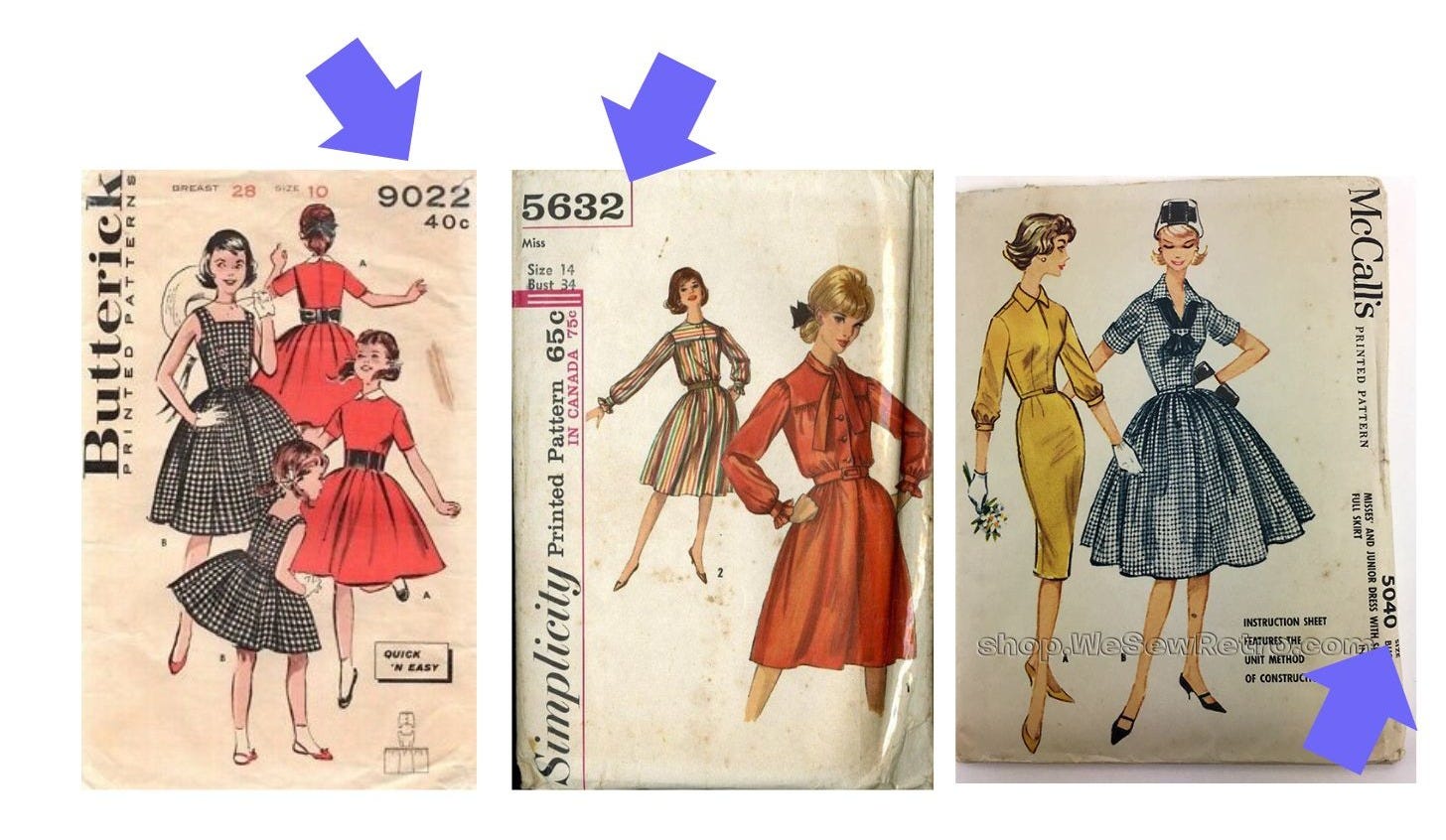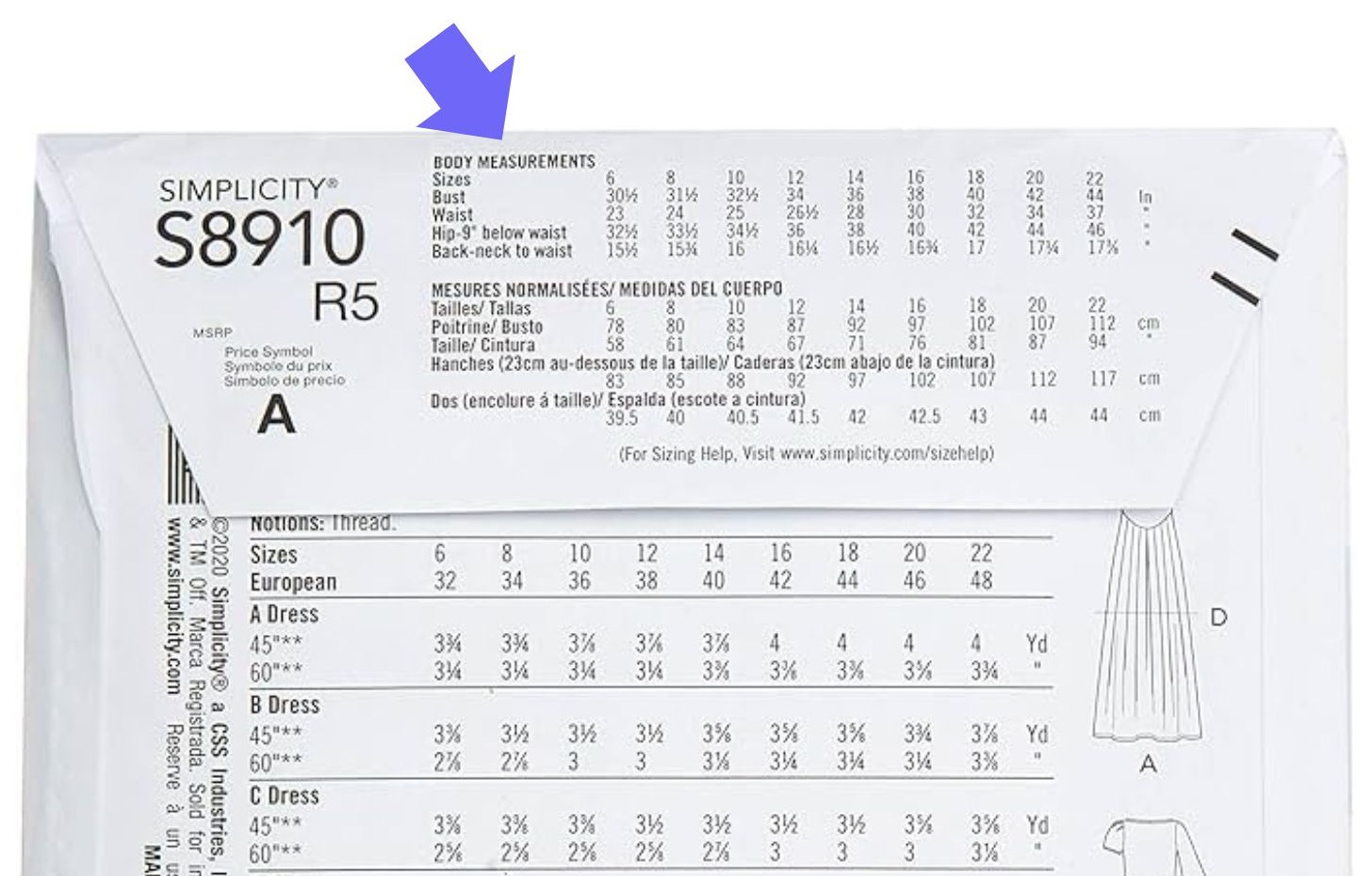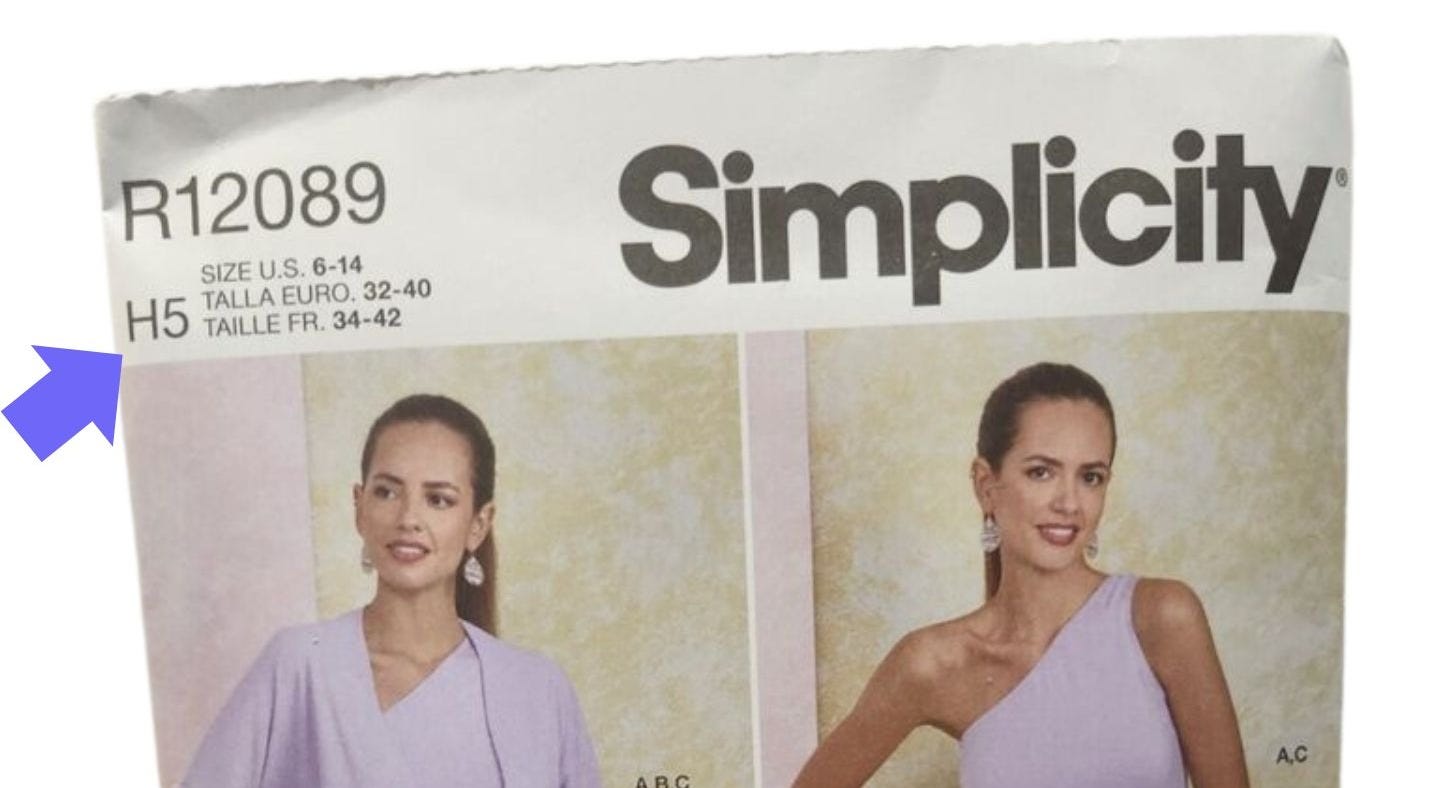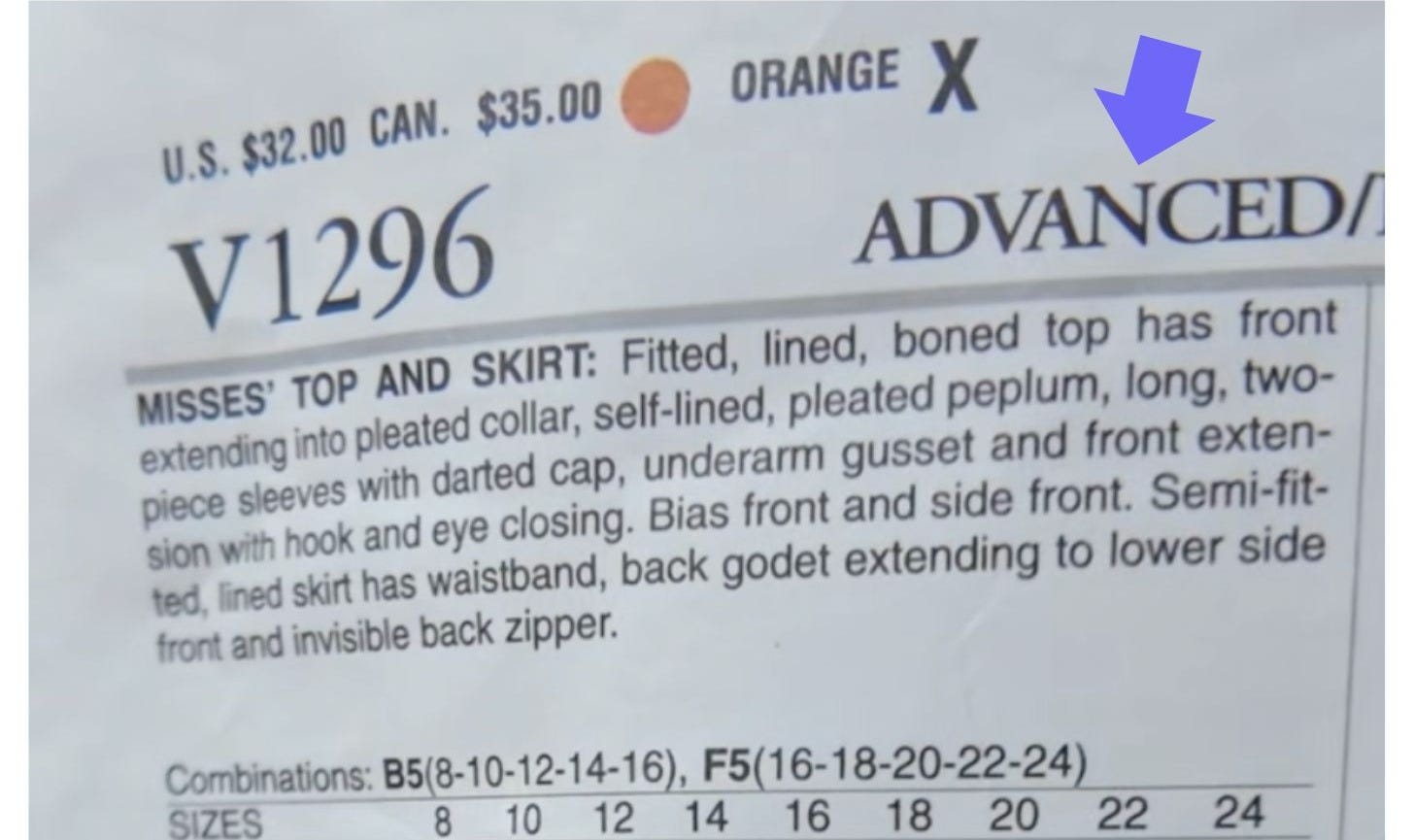I find sewing patterns to be very confusing.
I have sewn for 6 years and I develop sewing patterns for my business, so I should like them a little bit more, right?
I just think the instructions are never clear and because sizing varies from pattern to pattern the fit usually needs adjusting and sometimes I get frustrated when I mess up a portion of the garment.
If I am having these problems, then I know a lot of beginners feel similarly. It can be frustrating to not know something, so I compiled a little crash course on sewing patterns to give you the vocabulary to understand the basics.
Let’s begin.
Every sewing pattern has a unique identifier.
Every sewing pattern has a specific number that helps you identify the pattern. This is great to use when searching for tutorials. You may be able to find a video of someone constructing the pattern that you want to make.
Measurements will be located on the pattern package.
Sewing patterns come in different size sets. You may find that a sewing pattern doesn’t even contain the pattern pieces to make your size.
Because sizing varies so much from pattern company to pattern company, it is always a good idea to consult this size chart to make sure your measurements are represented.
Pay attention to size sets!
One annoying thing about some patterns is that the chart on the back will sometimes include more sizes than are included in the pattern. Make sure your size (based on your measurements) is included in the size set that you are choosing.
In this example, H5 is referencing the size set and this particular pattern makes sizes 6-14.
The skill level is noted on the pattern.
Most patterns will be scored as beginner, immediate, and advanced. However, this scoring system is arbitrary and varies from company to company.
Fabric type and notions needed are listed on the pattern.
I love that patterns list out what kind of fabric you can use and what sewing supplies you need to make the pattern. This makes shopping easier.
Fabric yardage is listed on the pattern, based on size.
In this example, if you were making the A or C version of the dress, then you need 2&1/4 yards of 45-inch width fabric to make the size 6 and so on.
Practice makes perfect.
If you want to practice reading sewing patterns and making clothes then check out Mood Fabrics!
Mood Fabrics: Free Sewing Patterns
Please comment other free resources as well!
If you want to learn more about the vocabulary of sewing patterns, check out my sewing zine How to Understand Sewing Symbols!
Here is a video explanation of this post:












You are truly amazing. Thank you for your hard work, it has made sewing so digestable for an ADHD Dislexic gal like me. Thank you <3